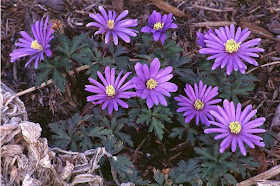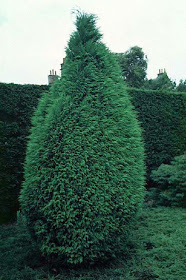Ilex verticillata 'Spriber (Berry Nice™)'
Winterberry, Black Alder, Holly
Type Shrub, woody plant
Hardy range 4A to 9A
Height 6' to 8' / 1.80m to 2.40m
Spread 4' to 5' / 1.20m to 1.60m
Growth rate Slow
Form Rounded and vase shaped
Exposure Partial shade or partial sun to full sun
Persistence Deciduous
Hardy range 4A to 9A
Height 6' to 8' / 1.80m to 2.40m
Spread 4' to 5' / 1.20m to 1.60m
Growth rate Slow
Form Rounded and vase shaped
Exposure Partial shade or partial sun to full sun
Persistence Deciduous
Bloom Color White
Bloom Time Spring
Bloom Time Spring
Environment
This plant tolerates flooding.
This plant will grow in wet or submerged soil.
Suitable soil is well-drained/loamy, sandy or clay.
The pH preference is an acidic to neutral (less than 6.8 to 7.2) soil.
This plant tolerates flooding.
This plant will grow in wet or submerged soil.
Suitable soil is well-drained/loamy, sandy or clay.
The pH preference is an acidic to neutral (less than 6.8 to 7.2) soil.
Leaf Color Green
Fall Color No change in fall color
Fall Color No change in fall color
Landscape Uses
- Woodland garden
- Screen
- Massing
- Specimen
- Woodland garden
- Screen
- Massing
- Specimen
Attributes and Features
- Pest tolerant
- Wetlands plant
- Attracts birds
- Attracts butterflies
- Inconspicuous blooms
- Persistent fruit
- Attractive fruit
- Fruit is edible by birds
- Pest tolerant
- Wetlands plant
- Attracts birds
- Attracts butterflies
- Inconspicuous blooms
- Persistent fruit
- Attractive fruit
- Fruit is edible by birds
Culture Notes
When planted in turf as a specimen, be sure to keep the soil under the canopy mulched so weeping stems and branches can droop to display the nice form. If turf is allowed to grow beneath the crown, it will thin due to the dense shade and low branches will interfere with mowing equipment. Little pruning is needed if the plant is properly located to allow for its spread. The plant grows in sun or partial shade in a rich, well-drained, acid soil, though it tolerates swampy areas. Its tolerance to wet soil makes this a useful plant in poorly-drained landscapes. Berry Nice has spectacular berry production and has good mildew resistance. 'Southern Gentlemen' is the pollinator. Plants serve as hosts for butterfly larvae.
Planting and establishing shrubs
The most common cause of young plant failure is planting too deep. Plant the root ball no deeper than it was in the nursery. In most instances, the root flare zone (point where the top-most root in the root ball originates from the trunk) should be located just above the landscape soil surface. Sometimes plants come from the nursery with soil over the root flare. If there is soil over this area, scrape it off. The planting hole should be at least twice the width of the root ball, preferably wider. In all but exceptional circumstances where the soil is very poor, there is no need to incorporate anything into the backfill soil except the loosened soil that came out of the planting hole. Never place ANY soil over the root ball. If a row or grouping of plants is to be installed, excavating or loosening the soil in the entire bed and incorporating organic matter enhances root growth and establishment rate.
Weed suppression during establishment is essential. Apply a 3-inch thick layer of mulch around the plant to help control weed growth. Keep it at least 10 inches from the trunk. If you apply it over the root ball, apply only a one or two inch layer. This allows rainwater and air to easily enter the root ball and keeps the trunk dry. Placing mulch against the trunk or applying too thick a layer above the root ball can kill the plant by oxygen starvation, death of bark, stem and root diseases, prevention of hardening off for winter, vole and other rodent damage to the trunk, keeping soil too wet, or repelling water. Regular irrigation through the first growing season after planting encourages rapid root growth, which is essential for quick plant establishment.
When planted in turf as a specimen, be sure to keep the soil under the canopy mulched so weeping stems and branches can droop to display the nice form. If turf is allowed to grow beneath the crown, it will thin due to the dense shade and low branches will interfere with mowing equipment. Little pruning is needed if the plant is properly located to allow for its spread. The plant grows in sun or partial shade in a rich, well-drained, acid soil, though it tolerates swampy areas. Its tolerance to wet soil makes this a useful plant in poorly-drained landscapes. Berry Nice has spectacular berry production and has good mildew resistance. 'Southern Gentlemen' is the pollinator. Plants serve as hosts for butterfly larvae.
Planting and establishing shrubs
The most common cause of young plant failure is planting too deep. Plant the root ball no deeper than it was in the nursery. In most instances, the root flare zone (point where the top-most root in the root ball originates from the trunk) should be located just above the landscape soil surface. Sometimes plants come from the nursery with soil over the root flare. If there is soil over this area, scrape it off. The planting hole should be at least twice the width of the root ball, preferably wider. In all but exceptional circumstances where the soil is very poor, there is no need to incorporate anything into the backfill soil except the loosened soil that came out of the planting hole. Never place ANY soil over the root ball. If a row or grouping of plants is to be installed, excavating or loosening the soil in the entire bed and incorporating organic matter enhances root growth and establishment rate.
Weed suppression during establishment is essential. Apply a 3-inch thick layer of mulch around the plant to help control weed growth. Keep it at least 10 inches from the trunk. If you apply it over the root ball, apply only a one or two inch layer. This allows rainwater and air to easily enter the root ball and keeps the trunk dry. Placing mulch against the trunk or applying too thick a layer above the root ball can kill the plant by oxygen starvation, death of bark, stem and root diseases, prevention of hardening off for winter, vole and other rodent damage to the trunk, keeping soil too wet, or repelling water. Regular irrigation through the first growing season after planting encourages rapid root growth, which is essential for quick plant establishment.

















